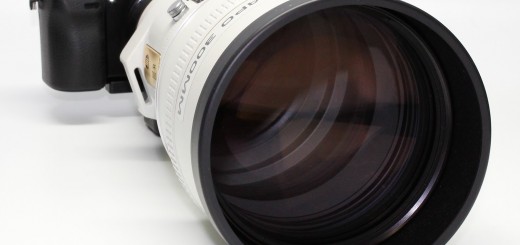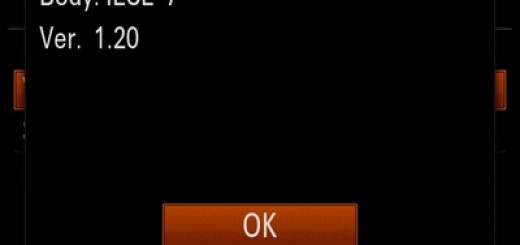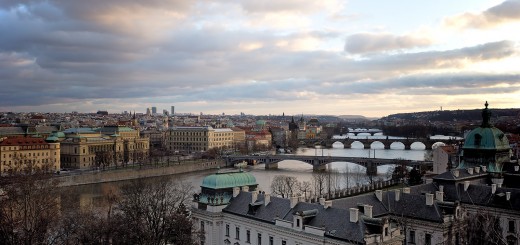SONY SEL 1018 f4 OSS Final Word
There are quite a few, who found SEL 1018 to be a mediocre lens at best, saying that their 18-55 and 18-200 SELs are sharper, but most of them stops there, without showing any pictures.
And then, there are some users who are giving rather high credit to this lens. I belong to this group too.
So, here is the summary from my findings and thoughts…
Positive:
- Size
- Weight
- Constant aperture
- Good flare resistance
- Even sharpness across the frame, from 5.6 with a distant subjects (landscape)
- Fast and silent AF
- OSS (image stabilization)
- Regular filter thread (no bulb front element)
- Comes with a hood
Neutral:
- Distortion
- Micro Contrast
- Colors
Negative:
- Price
- Magenta Casting on NEX 7 (As mentioned in a previous posts, that is rather problem of a NEX 7, than the lens itself)
I believe that SEL 1018 was designed mainly for the landscape use . From my tests, you can see, that the lens performs much better at middle to long distances, where it can challenge, some of the very best UWA-WA zooms.
I also posted samples, from whom it is safe to conclude, that it outperforms SEL 16 f2.8 when it comes to the corners. They are of course in a different price range, but it is Zoom starting at 10mm vs prime at 16mm.
If you are testing this lens, don’t forget to turn OSS off, when camera is on a tripod. Otherwise, you might get inconsistent and overall worse results.
Some users are testing the lens at short distances with a flat subject (typical ISO chart test, or white wall), where SEL 1018 doesn’t show its best. This scenario is however very unlikely to be met in a real life situations. Unless you are doing some copying work, or probably astro photography. In the first case, there are much better lenses for copy work (Makro lenses are usually the best, as they have negligible distortion), while in the second, you should look for the faster lens anyway.
Equally doubtful is its use for the street or candid photography, because of its slower aperture, but in those scenarios, SEL 1018 can serve well, when there is enough light.
Thanks to the rather moderate distortion (most pronounced at 10mm), SEL 1018 can be also used for the architecture. Especially indoor, OSS becomes a very welcomed addition.
All in all, SEL 1018 is not without flaws, but overall it is one of the best, if not the best optically corrected zoom lens for the E mount. Magenta cast remains as the only problem to deal with on a NEX 7. But in most situation it is easy to correct, using Adobe Flatfield, or few simple steps in a Photoshop.
Center resolution could be a bit higher, but in a real life, for the prints up to A2 size (with NEX 7), I doubt that resolution will be limiting factor.
I will have to made some prints to stand behind this statement, so for now, it is only my impression.
As much, as I was disgusted with a SEL 16-50 P, I am impressed with this little fellow. It is going to stay in my bag, till it (or me) last.
Here are few more samples, which I will try to append with better ones, when weather allows me, showing some of not yet mention aspects.
Flare can be a problem in some situations, but as you was able to see in the comparison against Nikkor 14-24, it is much better controlled. (Please note, that this shot is not focused properly, I was looking for the flare only).
 |
| Sony NEX 7 + SEL 1018 f4 OSS, forced flaring |
Next shot is showing very rough distortion correction (it could be done much, much better, but the shot is nothing special, and I wanted to check how the correction will affect the edges) in a Photoshop.
 |
| Sony NEX 7 + SEL 1018 f4 OSS, rough distortion correction |
Following shot shows bokeh at 18mm and f4.
 |
| Sony NEX 7 + SEL 1018 f4 OSS at 18mm and f4 Bokeh test |
Finally, few post processed shots, showing the potential of the lens.
 |
| Sony NEX 7 + SEL 1018 f4 OSS, at 18mm, f4, 1/100 and ISO 400. Hand held OSS – ON |
 |
| Sony NEX 7 + SEL 1018 f4 OSS at 10mm f5.6, 1/60s and ISO 100. Hand held, OSS – ON. |
 |
| Sony NEX 7 + SEL 1018 f4 OSS at 18mm, f8, 1/200s and ISO 100. Tripod, OSS – ON (unfortunately) |
Few more images from my recent trip to Alps, taken with NEX 5n and SEL 1018. (March 2013) There is noticeably less color casting, but some trails are still visible.
 |
| You might see here some magenta color casting in the top right and bottom left corner. But nothing to worry about. |
Links to the other parts of the review:
Part I – Initial Impression:
http://www.verybiglobo.com/?p=61
Part II – SEL 1018 f4 OSS vs SEL 16 f2.8:
http://www.verybiglobo.com/?p=60
Part III – SEL 1018 f4 vs Sigma 19 f2.8 E:
http://www.verybiglobo.com/?p=59
Part IV – SEL 1018 vs Nikkor 14-24 f2.8 G AF-S:
http://www.verybiglobo.com/?p=58




















I have a Sigma 8-16mm on my Sony NEX-7 which is very sharp in the centre but smears horribly to the corners. As it was the widest I could get for interior photography I have had to just live with it and fix everything through various processing applications afterwards. I tried the Sony 10-18 against my Sigma at my local store, went home processed the images, and as soon as I saw the quality of the Sony, I rushed back to buy it, by which time (4 hrs) they had sold out. The Sony NEX-7 sensor asks a lot of any lens in front of it, and the lack of quality and range in the Sony NEX lens range seems to be getting addressed. All now is to hope the update to the NEX-7 fixes some of the quirks of the current sensor, as you are starting to see a powerful little system from Sony for both stills and video.
Thanks for doing these test, not everyone has access to a lens you are thinking of purchasing before hand, but with test like yours and a few others I feel much more confident when I have to go into a purchase blind.
Keep up the good work.
Thank you Adam, for great input. Many people on forums questioned Sigma 8-16, so I can quote now from your comment.
I can see the better lenses from Sony are coming but my main concern are cooked RAW’s. I am not sure what are we comparing than, optics or softwares and how many pixels were lost or interpolated.
Software correction can work up to certain print size and in some situations, but it makes comparison between the lenses – impossible.
I urge everyone, to shout on Sony to bring us back – un-retouched RAW files, at least as the option. It can’t be hard to include such an option, and the only reason to hide it from users, is to cheat on the resulting image, so that reviews (before we all see what is going on there), give Sony better marks. Blah. Shame on you Sony!!!
I also use the sigma 8-16 on my n7. I think a problem with the lens is that there is a lot of variation form copy to copy. mine performs extremely well. At 8 en 10mm it needs to be stopped down, preferably to f11, to be really good, from corner to corner. and it does really well at f11. another thing is that at 8 en 10mm there seems to be some focus shift, so I rather use a fixed setting than AF. due to the very large depth of field at f11, this is hardly ever a problem.
In certain ways the combination of the sigma 8-16 with the n7 compares favorable with the combination of the a99 with ZA16-35. the later combination gives better contrast and better resolution (just) in absolute terms. The field curvature of the 16-35, at the wider end, can give problems I do not see with the 8-16.
and the 8-16 does not give a color shift, as apparently the 10-18 does.
The 10-18, for me, is tempting due to its size. the 8-16, with adapter, is rather large.
Thanks for the tests Viktor, great work.
coming from a d800 with lee filters, i am also venturing in mirrorless sony nex6 for more light weight travel landscape.
i am concern if the new 10-18 sel has any vignetting issues with the LEE Seven filters which i assume you are also using? I often stack up to 2 filters (sometimes even with lee cpl) on d800, and i do see vignetting till around 19mm on my 17-35.
With the smaller mount size of 10-18sel, will that still be a problem? and on a separate note how do you find the new Lee with 10-16. big stopper still cooler cast?
Hi, sorry for the short reply, but I am in the area with a weak signal. SEL 1018 have some vignetting issues with a Lee system, but I need to test it more to see the pattern. I have a standard (fat plastic) 62mm ring adapter and with it, hard vignetting occur at around 12mm. Problem is when you want to use polarizer. With it vignetting starts at 14mm approx.
Are you using the standard 100mm LEE filters with your SEL 1018 and still having issues with vignetting? or the new LEE seven filters for mirrorless? Wonder if the 1018 can take the weight of the standard LEE system. But i will be surprise it still have vignetting with the bigger filters, maybe you should get the wide angle adaptor ring?
I am using standard 100mm LEE. Vignetting is caused by the ring adapter, and yes, I should get thin one for UWA. But I am afraid, that it won’t be possible to use normal polarizer anyway, so probably only Lee Poralizer on UWA ring + 1 filter of choice.